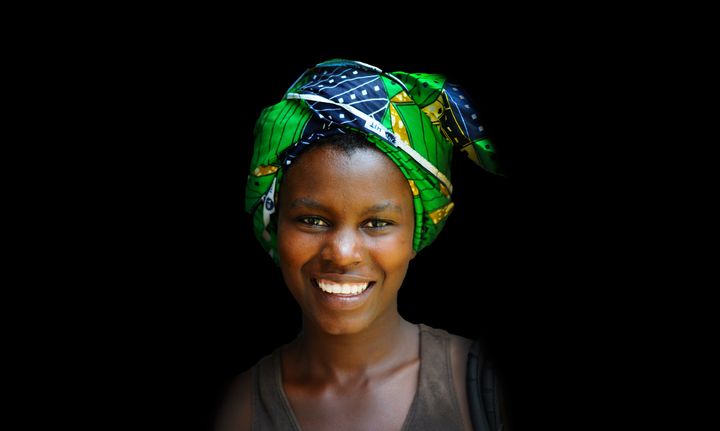
As a global community, we have a lot to learn about the different ways in which technology and innovation can have an impact on girls and boys.
Today (October 11) marks International Day of the Girl Child – observed across the world and intended by the United Nations to increase awareness of gender inequality faced by girls worldwide. It seems an apt moment to reflect on the work taking place in the developing world to enable women and girls not gifted with the same opportunities enjoyed by men and boys. While there has been dramatic progress for girls in some areas (such as primary education), discrimination and violence are commonplace for millions around the world. Girls’ reality and their opportunities are often very different to boys.
Recognising the potential for unintended consequences
Recent figures from UNICEF show girls, aged five to 14, spend over 160 million hours more on household chores than boys of the same age. One in seven girls, aged between 15 and 19, are married or in union. Economic, social and historical factors all have a role to play. But how should we tackle such a complicated global issue - exacerbated by technological advancements that potentially further hinder the battle for equality?
The relationship between females and mobile phones highlights broader challenges in the relationship between females and innovation. According to GSMA’s 2015 report Bridging the gender gap: Mobile access and usage in low and middle-income countries, women and girls without a mobile phone in low- and middle-income countries exceeds 1.7 billion. Women on average are 14% less likely to own a mobile phone than men, which translates into 200 million fewer women than men owning mobile phones. This percentage increases to 38% in South Asia. And, when women do have access, they use the technology less frequently and intensely (e.g., using messaging and data services).
How we develop innovative solutions to complex human problems is not a new question in global development, nor is considering the impact of poverty and gender inequality. But we are in the early stages of understanding the often unique benefits and risks of technological innovation for girls and women. Better tools to gauge positive or negative changes brought by technology will be an important contribution to tackling inequalities.
Palladium works with local and global leaders to ensure investments in innovation and technology are inclusive. In Tanzania, the Human Development Innovation Fund (HDIF) is developing a unique set of principles and case studies that focus on the relationship between gender and innovation. Our Head of Social Innovation + Technology, David B. McGinty, has told me that “essentially, we are asking whether an investment in technology empowers or further disenfranchises women and girls. While we have anecdotal experiences (many positive and some negative), HDIF and Palladium are taking a lead in looking specifically at our programmes and partners to provide practical, real world learning”.
Media technology taking on the gender gap
One such company, Africa’s Ubongo, produces interactive edutainment cartoons that address the issue of under-representation of female characters in the media. The company’s programmes, Ubongo Kids and Akili & Me, have strong female roles, and an analysis of 10 randomly selected episodes found that female characters receive 63% of the screen time. This is in contrast to research that shows the global average in children’s content sees male characters receiving 65% of the screen time compared to just 35% for females. Such an imbalance, according to research by the Geena Davis Institute for Gender in Media, has a strong effect on girls’ sense of self, role and cultural norms.
Ubongo’s use of technology is key to ensuring its efforts to address the male/female imbalance in the media have the greatest possible impact. In a geographical area where many children do not have access to television, Ubongo is able to overcome this challenge through the use of SMS, smart phone applications, eBooks and other technologies.
Such programmes are vital if we are to better enable girls and achieve balance for the genders through technological advancements. Political empowerment, greater access to quality education and timely health care, providing safe spaces for women and girls under threat of violence - these should be among the benefits that girls and women enjoy through the growth of technology in the developing world.
Palladium’s SPRING Accelerator explicitly aims to improve the lives of girls in nine countries in East Africa and South Asia. SPRING is working with 75 businesses to increase over 200,000 girls’ ability to earn, learn, save and stay safe. And, through Voices 4 Change (V4C) in Nigeria, Palladium has developed powerful social and traditional media tools through a campaign designed to further increase gender equality in the country.
Staying flexible to utilise innovation for gender equality
Palladium is continuously learning from experience, and adapting new approaches to gender and inclusion as we engage communities, help deliver basic services, co-design solutions, and scale innovations. Not only do we take gender seriously in our project and client work, but we have also committed to improving diversity and inclusion practices within the company. Our Director of Diversity and Inclusion, Dr Rosanna Duncan, is very clear that businesses need to change because “we need to be bolder. Diversity and Inclusion is not an initiative, it’s a way of living, a principle of operation. It’s about positively embracing 21st century corporate culture.”
As a global community, we have a lot to learn about the different ways in which technology and innovation can have an impact on girls and boys. Because ‘innovation’ is by definition something that is untested and not entirely predictable, it is critical that we monitor the often quite different effects that technologies will have on the lives of men and women, boys and girls. The theme of International Day of the Girl 2017 is EmPOWER Girls. We must be prepared to quickly adjust our approaches to maximise the potential of technology to close the gender gap and unlock the potential of girls around the world.
